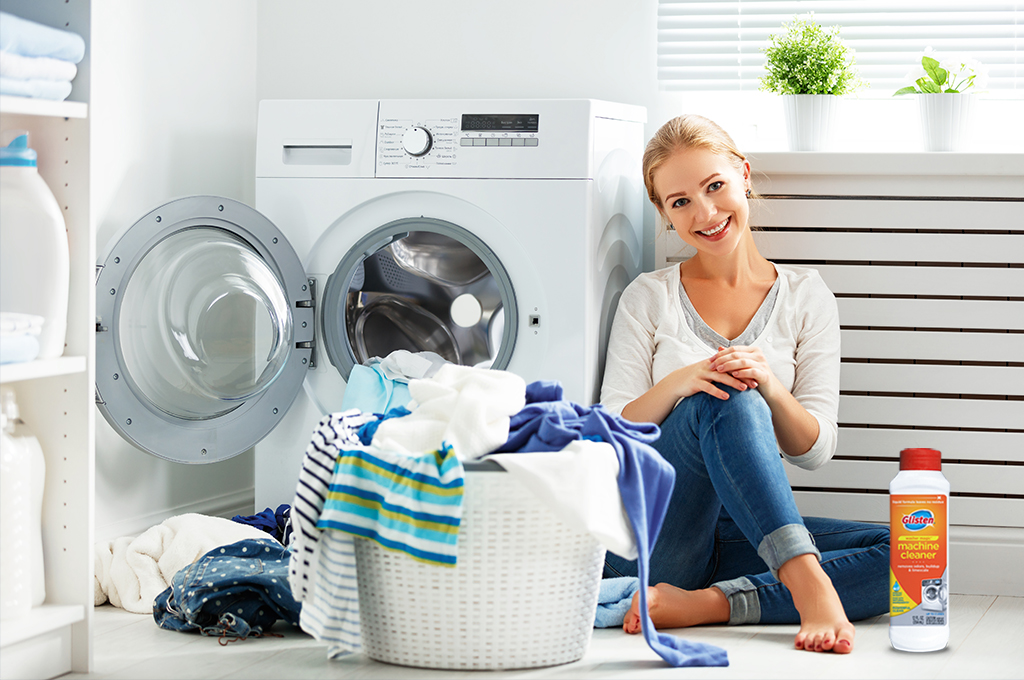Emily had always trusted her washing machine to keep her family’s clothes fresh and clean. But lately, things didn’t seem quite right. The clothes came out smelling a little musty, and she noticed a grimy residue inside the washer. Confused, she thought, “How could the machine that cleans my clothes need cleaning itself?” After some quick research, she realized that her faithful washing machine had been quietly collecting dirt, detergent buildup, and even mold over the years. She never knew cleaning a washing machine was so crucial to keeping it running efficiently—and keeping her clothes smelling fresh.
Like Emily, many people don’t realize that a cleaning washing machine needs regular cleaning to function properly. Over time, detergent residue, fabric softener, and grime can build up inside the machine, leading to unpleasant odors, mold, and even machine malfunctions. In fact, according to a study by Consumer Reports, around 17% of front-loading washer owners reported mold or mildew problems, often due to a lack of regular cleaning. (Source: Consumer Reports, 2021) But don’t worry—cleaning your washing machine is easier than you think. In this article, we’ll walk you through why cleaning your washing machine is important, how often you should do it, and the best methods to keep it in top condition.
Why Should You Clean Your Washing Machine?
While your cleaning washing machine job is to clean your clothes, it also collects all the dirt, grime, oils, and detergent residues that come from those clothes. Over time, these residues can build up inside the machine, leading to a number of issues:
- Unpleasant Odors: A buildup of mold, mildew, and detergent can create a musty smell inside your washing machine that can transfer to your clothes. This is especially common in high-efficiency (HE) front-loading washers, which are prone to mold growth due to their water-tight seals.
- Poor Performance: If your washing machine is clogged with detergent buildup or dirt, it may function less efficiently. This could lead to clothes not being thoroughly cleaned, which means you might need to run multiple cycles to get them clean.
- Damage to Clothes: A dirty washing machine can leave stains or residue on clothes, particularly if mold or mildew is present. Fabric softener and detergent residue can also break down fabrics over time, reducing their lifespan.
- Extended Lifespan of the Machine: Regular maintenance, including cleaning, helps keep the machine in good condition. Ignoring this simple task can lead to mechanical problems, breakdowns, and a shorter lifespan for your washer. According to Angi’s List, regular maintenance can extend the life of a washing machine by 5 to 10 years. (Source: Angi’s List, 2022)
How Often Should You Clean Your Washing Machine?
Experts recommend cleaning washing machine once a month to prevent the buildup of residue and mold. However, the frequency may depend on how often you use your machine. If you’re using it multiple times a week or frequently washing heavily soiled clothes, cleaning your machine more often—every two weeks—might be beneficial.
A simple monthly cleaning routine helps to keep your washing machine running efficiently, removes bacteria, and ensures that your clothes come out fresh every time.
Step-by-Step Guide to Cleaning Your Washing Machine
Now that you understand why it’s important to clean your washing machine let’s dive into the step-by-step process. Whether you have a top-loading or front-loading machine, regular maintenance will keep it functioning smoothly.
3.1. Cleaning a Front-Loading Washing Machine
Step 1: Clean the Gasket
The rubber gasket (seal) around the Door of your front-loading washing machine is a prime spot for mold and mildew growth because water often gets trapped there. To clean it:
- Open the washer door and gently pull back the rubber gasket.
- Wipe the inside of the gasket with a damp cloth or sponge. If visible mold is present, use a mixture of water and vinegar (a natural disinfectant) or a diluted bleach solution.
- Dry the area with a clean towel.
Step 2: Run a Cleaning Cycle
Most modern washing machines come with a cleaning cycle. If yours has this feature:
- Add a washing machine cleaner (commercial products like Affresh or natural options like baking soda and white vinegar work well).
- Select the cleaning cycle and run it on the hottest setting.
If your machine doesn’t have a cleaning cycle:
- Add 1 cup of baking soda directly to the drum and 1 cup of white vinegar to the detergent dispenser.
- Run a regular cycle on the hottest water setting. The combination of baking soda and vinegar will help break down soap scum, bacteria, and other residues.
Step 3: Clean the Dispensers
Detergent and fabric softener dispensers can become clogged with product buildup over time. Remove these dispensers (if they’re removable) and soak them in warm, soapy water for 10–15 minutes.
- Scrub away any residue with a brush or sponge and rinse them thoroughly before putting them back in place.
Step 4: Wipe Down the Drum and Door
Once the cleaning cycle is complete, wipe down the inside of the drum with a microfiber cloth. Remember to wipe the inside of the Door, where moisture can collect.
3.2. Cleaning a Top-Loading Washing Machine
Step 1: Run a Cleaning Cycle with Vinegar and Baking Soda
For top-loading cleaning washing machine
- Fill the machine with hot water.
- Add 1 cup of white vinegar and let the machine agitate for a few minutes to mix the vinegar with the water.
- Pause the cycle and let the vinegar water sit for an hour. This helps to break down dirt, grease, and detergent buildup.
- After an hour, add 1 cup of baking soda and resume the cycle, allowing it to finish.
Step 2: Wipe the Drum and Agitator
Once the cycle is done, use a clean cloth or sponge to wipe down the inside of the drum and the agitator (the centerpiece that moves the clothes in a top-loader). Pay special attention to any hard-to-reach areas where detergent can accumulate.
Step 3: Clean the Dispensers and Lint Trap
Similar to front-loaders, top-loaders also have detergent and fabric softener dispensers that can become clogged. Remove and clean them with warm, soapy water. If your machine has a lint trap, be sure to clean that as well.
Preventative Measures to Keep Your Washing Machine Clean
Once your washing machine is clean, there are several simple steps you can take to prevent future buildup and keep it fresh between cleanings:
- Leave the Door Open: After each wash cycle, leave the Door of your front-loading machine open to allow moisture to evaporate. This can help prevent mold and mildew from forming inside the drum or gasket.
- Use the Right Amount of Detergent: Overusing detergent can lead to soap scum buildup. Always follow the manufacturer’s instructions and use HE (high-efficiency) detergent in high-efficiency machines. According to Consumer Reports, using too much detergent is one of the most common causes of residue buildup in washing machines. (Source: Consumer Reports, 2022)
- Run Hot Water Cycles: Every few weeks, run a cycle with hot water to break down any residue that may be forming. This can help maintain the machine’s efficiency.
- Wipe the Drum Regularly: Keep a microfiber cloth nearby to wipe down the drum and Door quickly after each use. This helps remove excess moisture and detergent.
How a Clean Washing Machine Saves You Money
Maintaining a clean washing machine doesn’t just keep your clothes fresh—it also saves you money in the long run. A dirty washing machine uses more energy and water to complete cycles, which can increase your utility bills. Additionally, machines that aren’t maintained properly are more prone to mechanical breakdowns. A clogged or moldy machine is more likely to need repairs, which can be costly.
According to Angi’s List, washing machine repairs can range from $150 to $300, depending on the problem. Regular cleaning helps to prevent these issues, extending the life of your machine and saving you money in repair or replacement costs. (Source: Angi’s List, 2022)
Conclusion:
Like Sarah, many homeowners are surprised to learn how important it is to clean their washing machines regularly. A clean machine not only ensures your clothes come out fresh but also prevents mold, mildew, and mechanical problems that could lead to costly repairs. By following these simple cleaning tips and incorporating them into your regular household routine, you’ll keep your washing machine running efficiently for years to come. It’s a small effort that pays off in cleaner clothes and a healthier home.
















